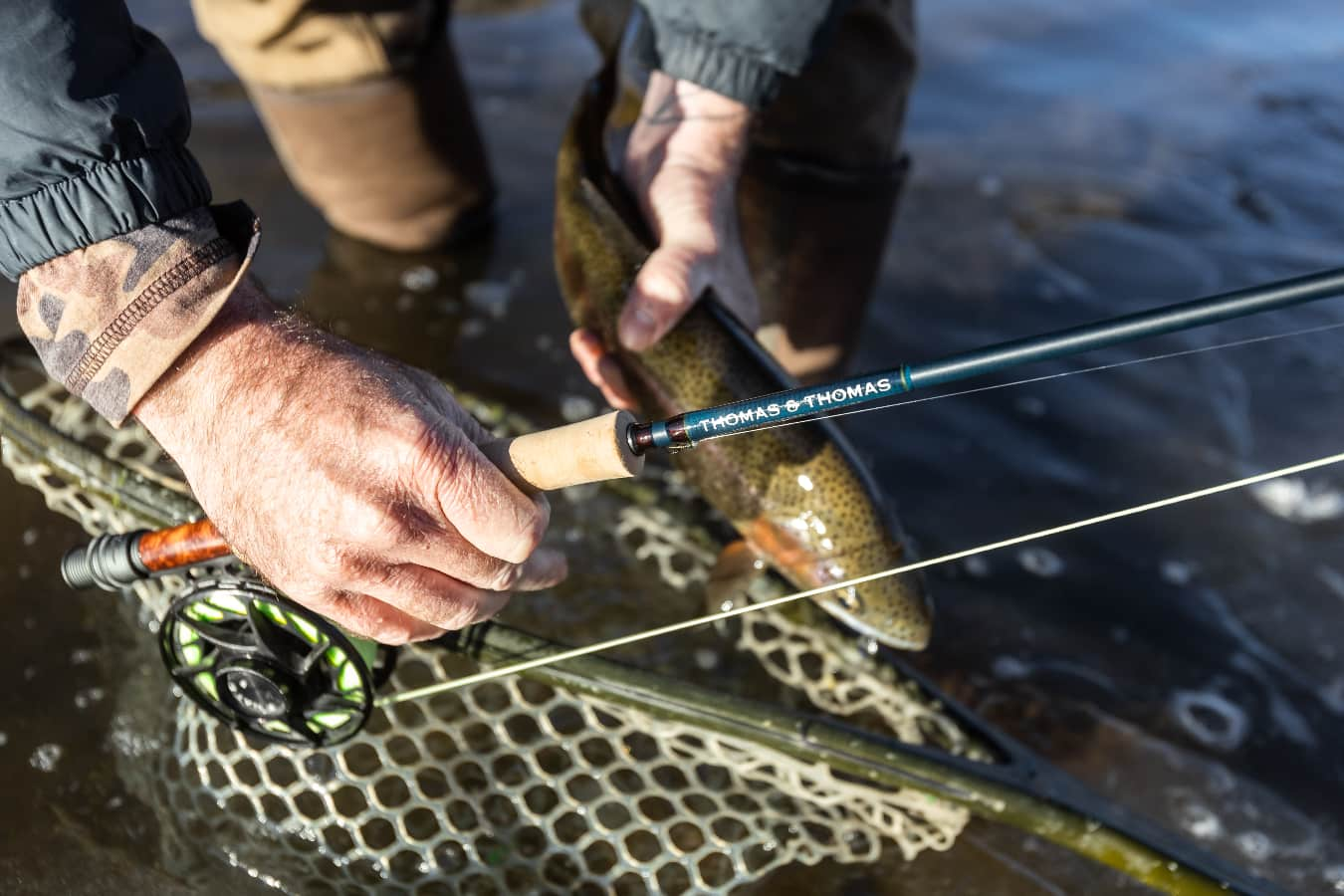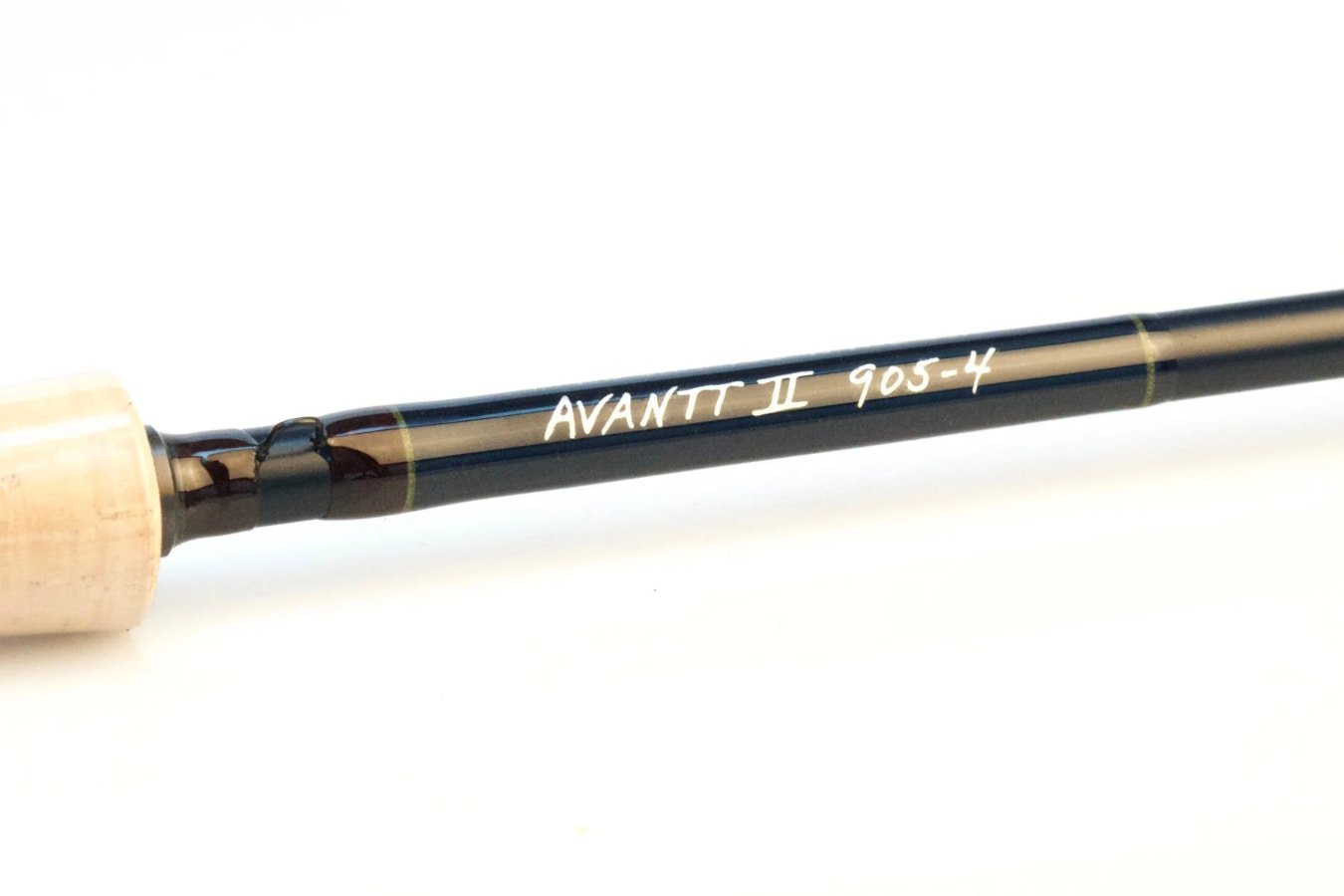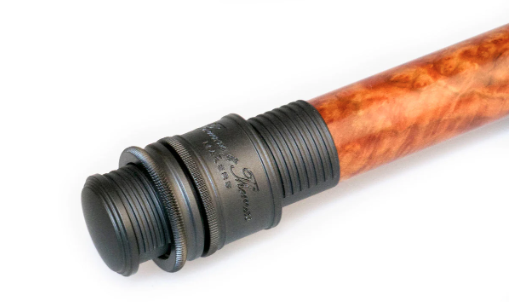Gear Review: Thomas & Thomas Avantt II Fly Rod

Before 2024 I’d never fished a Thomas & Thomas rod. I’d thrown them at fly fishing shows, and wiggled a few at fly shops, but I never had the chance to get one out on the water.
Then the 9′ 5-weight Avantt II showed up, and I spent the better part of two months with it as my primary stick.
I don’t think Thomas & Thomas could’ve made a better first impression if they’d tried.
The Avantt II is one of the smoothest, most intuitive rods I’ve ever fished. It’s light, it tracks straight, and it was plenty accurate out to about 50 feet. The Avantt II is also one of the prettiest rods I’ve ever fished, and the build quality is on par with what I expect from a Winston (who has the best build quality for production rods, in my opinion). I didn’t experience any major drawbacks while fishing the Avantt II, although some other reviews have mentioned that getting the most out of this rod requires good casting skills. I think that can be said for any rod that’s not too fast, and the Avantt II is decidedly what I’d call a moderate-fast rod, with plenty of feel down to the cork.
Let’s take a deeper look at why I enjoyed the Avantt II so much.

Blend of Feel, Power
Thomas & Thomas achieved a wonderful blend of feel and power with the Avantt II. The rod loads smoothly at every reasonable trout fishing distance, but it never feels overwhelmed. To use cars as a metaphor, the Avantt II felt like a properly-geared 6-speed sports car running in 5th. It has all the power and control you’d need, but there’s a bit of extra performance on tap.
On the water, this means you won’t have problems punching dry flies through the wind, tossing large nymph rigs, or even smaller streamers. The Avantt II makes just about every cast and drift feel effortless, because I never doubted that the rod had the power and finesse to get any job done. For example, I was fishing a local freestone here in Wyoming when our infamous wind kicked up. The Avantt II punched accurate casts into a stiff headwind with ease, even when I switched from a nymph rig to a dry-dropper. Don’t be fooled by how light and responsive the Avantt II feels when you first pick it up. This rod has more power than you’d expect, which shines both in the wind and when you’re fighting fish. I hooked into a few 20-inch browns while testing the Avantt II, and the rod never felt outgunned while getting those bigger trout to the net.
I paired this rod with two different fly lines – a Trout Double Taper and an Amplitude Infinity, both from Scientific Anglers. The Avantt II responded well to both lines, but most anglers will probably prefer how it performs with a line like the Infinity. That line is a half-size heavy, and the Avantt II responds to that by loading deeper and giving the caster a bit more feedback than you’ll feel with a true-to-weight line. That being said, the Avantt II threw wonderful mends with that Double Taper.
Thomas & Thomas bills this rod as “fast” but I think moderate-fast is a more accurate description. Regardless, you won’t lack feedback when casting this rod, as it offers plenty of feel at any normal trout fishing distance.

Accuracy
Every rod builder wants to hang their hat on accuracy these days. Thomas & Thomas is no different, claiming the Avantt II makes “accurate casts at all distances seem virtually effortless.” This is achieved thanks to the company’s blank-rolling process that utilizes five different types of graphite fibers, along with a proprietary resin, to create blanks that track straight and dampen effectively.
As I’ve discussed before, fly rods can be inherently accurate, even if accuracy is still largely up to the angler. For a rod to be accurate in the hands of a competent caster, the rod needs to move its tip in a straight line, with as little side-to-side movement as possible. Rods that achieve this level of stability are noticeably more accurate than rods that don’t.
So, does the Avantt II stack up well in the accuracy department? Are the company’s claims true?
My on-the-water experience would say yes. I never had problems getting my flies where I needed them, even during notoriously picky early-season blue-wing hatches. The Avantt II excels at throwing small dries accurately, but I made pinpoint casts with nymph rigs, as well.
If you’re a competent caster, you’ll be plenty accurate with the Avantt II.

Quality
This rod is one of the most gorgeous production rods I’ve ever used. It has a deep-sea blue blank, complemented by brown thread wraps tipped with green at the ferrules. The reel seat is a gorgeous burled insert, and the dark matte gunmetal hardware completes a classy, upscale look. For the anglers who want a rod with personality and looks to match how well it fishes, they’d be hard-pressed to find something better than the Avantt II.
It’s priced at $965, which is less than other flagship rods currently available. I appreciate Thomas & Thomas keeping this rod below the $1,000 mark, and I think it’s worth every penny of that $965 price.
Who It’s For
I clicked with the Avantt II thanks to the feedback it provides during the cast, and its smooth, relaxed action. I’ve never enjoyed fishing stiff, ultra-fast rods, even though I objectively appreciate how effective those rods can be. The Avantt II has little swing weight, it’s accurate, and it feels optimized for throwing dry flies, even though it’s perfectly capable of fishing nymph rigs and smaller streamers.
With that said, I recognize the Avantt II might present a learning curve for some anglers, particularly those used to fast, stiff rods. Good casting mechanics are essential to unlocking what the Avantt II can do, as is picking the right line. I wouldn’t line this rod with anything heavier than the SA Amplitude Infinity, and I’d recommend anyone who loves fishing dry flies try this rod with a double taper.
The Avantt II feels like the perfect rod for dry-fly focused anglers who appreciate a slower casting experience, but still want the versatility present in most flagship 9′ 5-weights.











